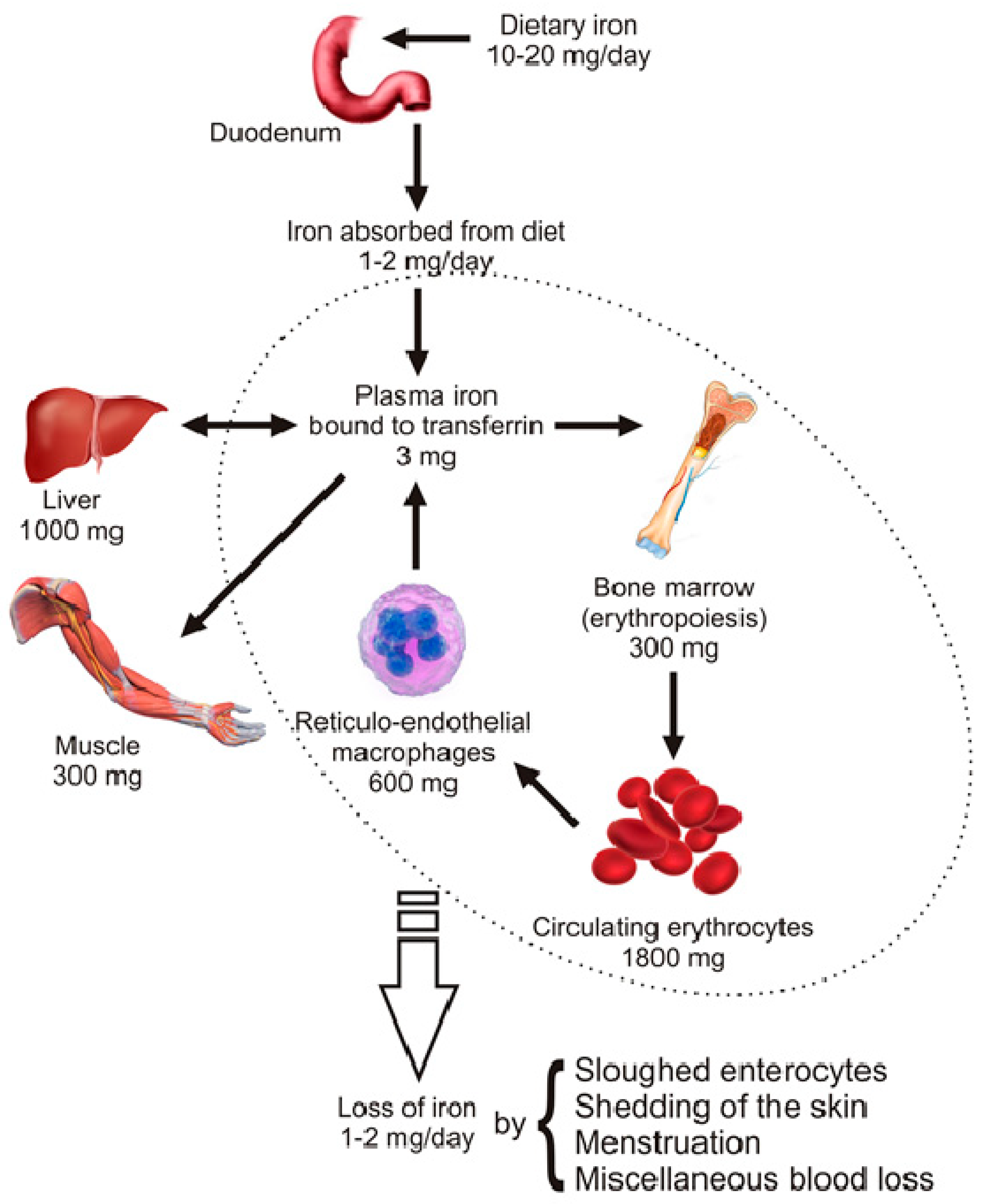Inhibition of Iron Absorption by Calcium Is Modest in an Iron-Fortified Casein- and Whey-Based Drink in Indian Children and Is Easily Compensated for by Addition of Ascorbic Acid. Thomas Walczyk Thomas Walczyk.
 Pharmaceuticals Free Full Text Role Of Dietary Flavonoids In Iron Homeostasis Html
Pharmaceuticals Free Full Text Role Of Dietary Flavonoids In Iron Homeostasis Html
The body absorbs only a limited amount of iron from foods and supplements.

Does whey protein inhibit iron absorption. How Long Does it Take. While the exact absorption of heme iron is unknown estimated to be around 15-35 we know that heme iron is more readily absorbed by the body than nonheme iron about 3-20. On the other hand soy protein inhibits it.
Caseins inhibit iron absorption in humans but hydrolysis of whole caseins lessens this effect and can improve iron absorption. Am J Clin Nutr. Vitamin C and protein containing lactoferrin increase absorption of the iron.
Interestingly dairy products specifically cows milk have been shown to decrease iron absorption while whey protein supplements containing lactoferrin increase absorption. We absorb a higher percentage of heme iron found in meat proteins than we do nonheme iron found in plant-based foods and a variety of food components including phytates and proteins found in soy may inhibit nonheme iron absorption. The egg factor has been observed in several separate studies.
Whey protein is absorbed and utilized very quickly compared to other types of protein. In still further instances the effects counterbalance each other. Studies have shown that whey protein containing lactoferrin can enhance iron absorption.
Animal tissue beef pork liver chicken and fish increases the absorption of this micronutrient. Whey protein digestion process begins in your stomach before traveling through the small intestine. Similarly green tea contains catechins and flavonoids which are other forms of tannins which in high concentrations can inhibit the absorption of protein and iron.
We absorb a higher percentage of heme iron found in meat proteins than we do nonheme iron found in plant-based foods and a variety of food components including phytates and proteins found in soy may inhibit nonheme iron absorption. According to studies phosvitin a protein in egg yolk inhibits iron absorption even though egg yolk is a rich source of the mineral. For example coffee consumption can inhibit iron absorption.
If you have iron deficiency or are at high risk of developing iron deficiency you should avoid eating nonheme iron sources with soy protein. Foods rich in iron and protein should not be consumed with tea owing to the presence of tannins which are found in legumes and cereals. If you have iron deficiency or are at high risk of developing iron deficiency you.
The following recipe tastes delicious. Phosphoprotein called phosvitin is a protein with a iron binding capacity that may be responsible for the low bioavailability of iron from eggs. The whey protein absorption rate is 8-10g per hour.
Oxalic acid is found in spinach chard beans and nuts and acts to bind and inhibit iron absorption. This iron inhibiting characteristic of eggs is called the egg factor. The same protein has been found to reduce uptake of other minerals as well notably calcium and magnesium.
Eggs contain a compound that impairs absorption of iron. Clusters of phosphoserine residues in cow milk caseins bind ferric iron with high affinity. It is therefore essential to understand some of the factors that enhance and inhibit our absorption of nonheme foods.
Varying levels of calcium higher levels in whey and whey-hydrolyzed products may possibly have had additional effects on iron absorption Hurrell et al 1989. The new technology uses a ground-breaking iron-whey protein complex to ensure iron is released in the small intestine where it is most readily absorbed. Animal proteins such as casein whey egg whites and proteins from plants soy protein have been shown to inhibit iron absorption in humans as well.
The inhibitory effect of soy products on nonheme iron absorption in man. Whey protein has been shown to be particularly effective at increasing muscle growth. But theres more to eggs and iron absorption.
Enzyme hydrolysis of whey protein to 16 Lactry and 36 Lad reduced nonheme iron absorption compared with egg albumin but to a lesser extent than that of intact whey protein. In other instances the effects of one can get enhanced by the other. If iron reaches the stomach it may cause oxidative stress and trigger gastric side-effects.
Use of whey protein with this drug used to prevent or treat osteoporosis might decrease absorption of the drug. Whey protein has been found to increase zinc absorption thus providing a whey based supplement with micronutrients may be an effective strategy to increase iron and zinc bioavailability from plant-based foods and alleviate iron and zinc deficiencies. 5 However despite the fact that heme is better absorbed most of the iron in our diets is derived from nonheme sources.
On the other hand casein and whey proteins from cows milk account for the greater proportion of the protein present in the majority of infant formulae and foods and have a negative influence on iron uptake. 3 Laboratory for Human Nutrition Swiss Federal Institute of Technology ETH Zurich Zurich Switzerland. In a subsequent study the bovine milk proteins casein and whey were also shown to inhibit iron absorption.